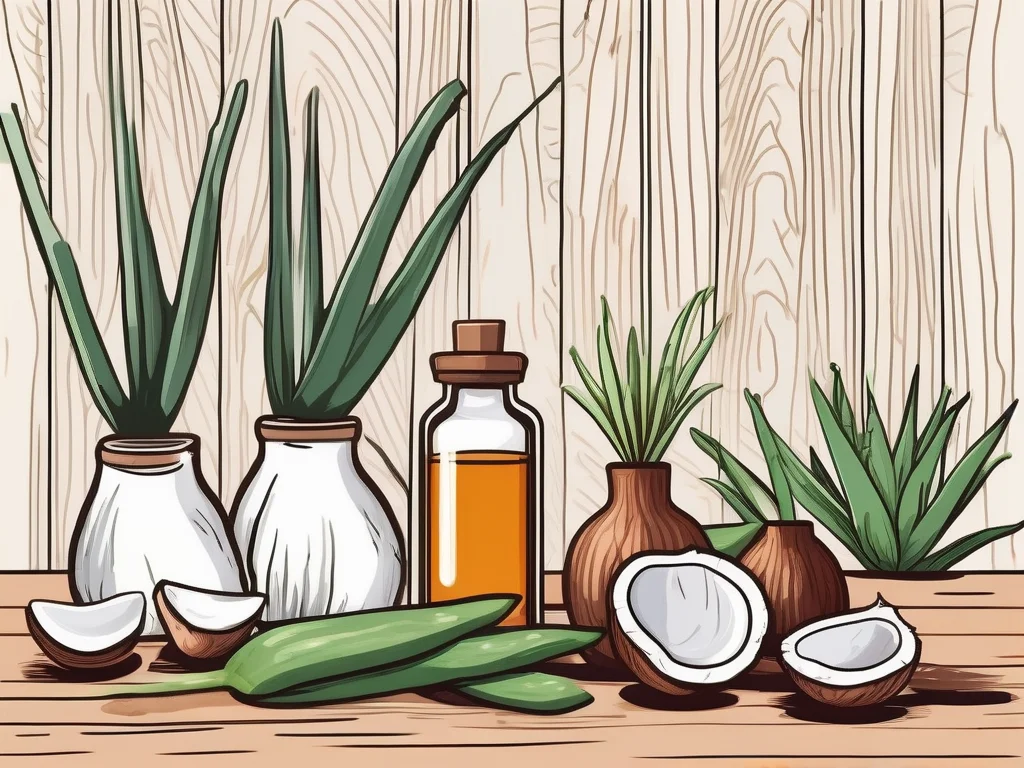Fungal skin infections, such as athlete’s foot, ringworm, and candidiasis, are common yet uncomfortable conditions caused by fungi thriving in warm, moist environments. While over-the-counter treatments are available, natural remedies offer a cost-effective, side-effect-free alternative to manage and prevent these infections. This guide explores what fungal infections are, their causes and symptoms, the benefits of natural remedies, how to prepare your home for treatment, effective natural solutions, and tips to prevent recurrence.
What Are Fungal Skin Infections?
Fungal skin infections occur when fungi, such as dermatophytes or yeast, overgrow on the skin. These microorganisms flourish in damp, warm conditions and can spread through direct contact or shared items like towels. Common types include:
- Athlete’s Foot: Affects feet, causing itching, redness, and scaly rashes.
- Ringworm: Appears as circular, red rashes with raised edges on the body, scalp, or groin.
- Candidiasis (Yeast Infection): Impacts skin folds, mouth, or genitals, leading to redness and itching.
Severe cases, like systemic fungal infections, can affect internal organs and pose serious risks, especially for those with weakened immune systems. Recognizing symptoms early is key to effective treatment.
What Causes Fungal Skin Infections?
Fungal infections stem from various factors:
- Weakened Immune System: A compromised immune response allows fungi to proliferate.
- Moisture Exposure: Prolonged dampness, such as sweaty feet or wet clothing, creates an ideal fungal environment.
- Poor Hygiene: Infrequent cleaning increases infection risk.
- Tight Clothing: Non-breathable fabrics trap moisture, promoting fungal growth.
Symptoms include itching, redness, scaling, blisters, or pustules, varying by infection type and location. Persistent or worsening symptoms require medical attention for proper diagnosis.
Why Choose Natural Remedies for Fungal Infections?
Natural remedies are a popular choice for treating fungal skin infections due to their affordability, minimal side effects, and holistic benefits. Unlike over-the-counter antifungal creams, which may cause skin irritation or contribute to drug-resistant fungi, natural treatments target symptoms while supporting overall health.
Benefits of Natural Remedies
- Antifungal Properties: Ingredients like tea tree oil and garlic combat fungi effectively.
- Reduced Side Effects: Natural options are gentler on the skin compared to synthetic drugs.
- Immune Support: Many remedies strengthen the body’s defenses, reducing recurrence.
- Cost-Effective: Most ingredients are readily available at home or affordable to purchase.
Risks of Over-the-Counter Treatments
Frequent use of chemical-based antifungals can lead to:
- Skin irritation or allergic reactions.
- Drug interactions.
- Development of resistant fungal strains, complicating future treatments.
Opting for natural remedies empowers you to manage your health holistically while minimizing risks.
How to Prepare Your Home for Natural Treatment
Creating a clean, dry environment is crucial for effective treatment and preventing fungal reinfection. Follow these steps:
1. Maintain a Clean Environment
- Launder Regularly: Wash bed linens, towels, and clothing frequently to eliminate fungal spores.
- Disinfect Surfaces: Clean showers, gym floors, and other shared spaces to reduce contamination.
- Ventilate Spaces: Use fans or open windows to lower moisture levels, as fungi thrive in damp conditions.
- Add Air-Purifying Plants: Incorporate plants like aloe vera or spider plants to improve air quality and reduce mold spores.
2. Gather Natural Ingredients
Stock up on antifungal ingredients such as:
- Tea Tree Oil: Known for its potent antifungal and antibacterial properties.
- Apple Cider Vinegar: Contains enzymes and probiotics to fight fungal overgrowth.
- Coconut Oil: Virgin, cold-pressed oil with antifungal benefits.
- Garlic: A natural antifungal agent.
- Probiotics: Support immune health to prevent infections.
Choose high-quality, organic products for maximum efficacy, such as raw, unfiltered apple cider vinegar or cold-pressed coconut oil.
Effective Natural Remedies for Fungal Skin Infections
Here are proven natural remedies to treat fungal infections at home, focusing on topical applications and dietary changes.
Topical Treatments
Topical remedies directly target fungal growth and alleviate symptoms like itching and inflammation.
- Tea Tree Oil: Dilute 2–3 drops with a carrier oil (e.g., coconut oil) and apply to the affected area twice daily. Its antifungal properties reduce fungal growth and soothe irritation.
- Garlic Paste: Crush fresh garlic, mix with coconut oil or aloe vera gel, and apply to the skin. Garlic’s antifungal compounds help eliminate fungi.
- Other Essential Oils: Lavender, oregano, or peppermint oils can be diluted and applied for their antifungal and soothing effects.
Application Tips: Always patch-test to avoid skin sensitivity. Apply consistently for 1–2 weeks or until symptoms subside.
Dietary Changes
Internal health plays a significant role in fighting fungal infections.
- Incorporate Antifungal Foods: Add garlic, onions, ginger, and coconut oil to meals for their antifungal properties.
- Reduce Sugar Intake: Sugary and processed foods feed fungi, worsening infections. Opt for whole, nutrient-rich foods.
- Stay Hydrated: Drink plenty of water to flush toxins and maintain healthy skin.
Combining topical and dietary approaches enhances treatment effectiveness and prevents recurrence.
How to Prevent Future Fungal Infections
Preventing fungal infections requires proactive lifestyle changes to minimize risk factors.
Lifestyle Changes for Prevention
- Avoid Walking Barefoot: Wear shoes in public showers, pools, or gyms to prevent fungal exposure.
- Choose Breathable Fabrics: Opt for moisture-wicking clothing to reduce sweat buildup.
- Maintain Hygiene: Keep skin clean and dry, especially in moisture-prone areas like skin folds.
- Dry Thoroughly: After washing, dry hands, feet, and body thoroughly to eliminate dampness.
When to Seek Medical Attention
While natural remedies are effective for mild cases, consult a healthcare professional if:
- Symptoms persist or worsen after 1–2 weeks of treatment.
- The infection spreads rapidly or affects large areas.
- You experience fever, severe pain, or have a weakened immune system.
A doctor can provide a precise diagnosis and prescribe antifungal medications if needed.
Conclusion
Fungal skin infections, while bothersome, can be effectively managed with natural remedies like tea tree oil, garlic, and dietary adjustments. By understanding the causes, symptoms, and types of fungal infections, you can take targeted steps to treat and prevent them. Preparing your home, using high-quality natural ingredients, and adopting preventive habits ensure long-term skin health. If symptoms persist or escalate, seek medical advice for proper care. Embrace these natural solutions to cure fungal infections at home and maintain healthy, fungus-free skin.



